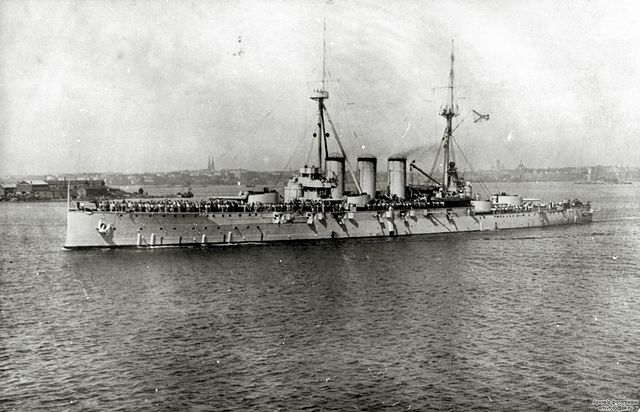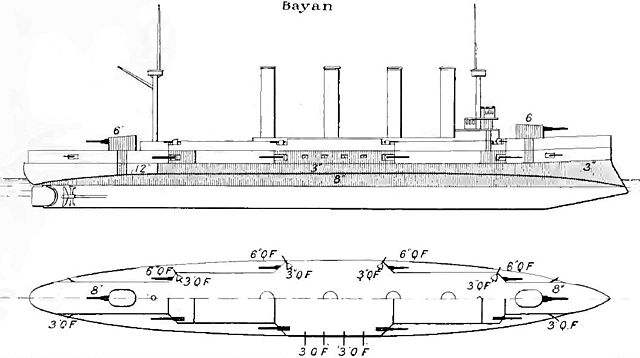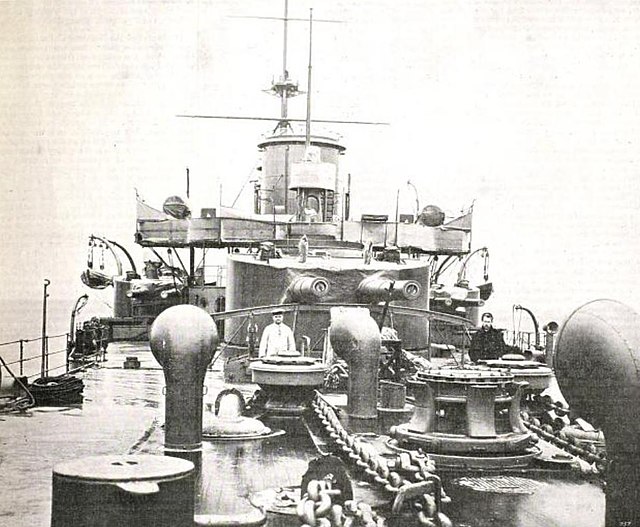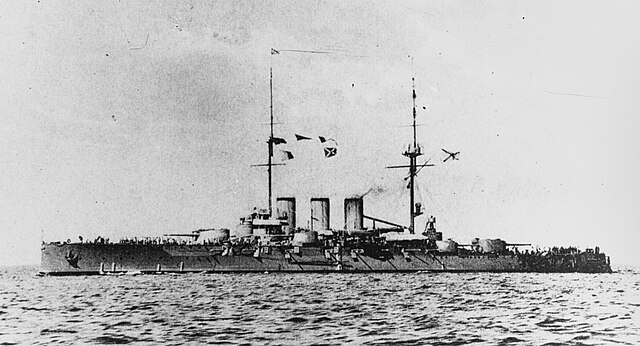120 mm 50 caliber Pattern 1905
The 120 mm 50 caliber Pattern 1905 was a Russian naval gun developed by Vickers for export in the years before World War I that armed a variety of warships of the Imperial Russian Navy. Guns salvaged from scrapped ships found a second life as coastal artillery, railway artillery and aboard river monitors during the Russian Civil War. It was estimated that there were 110 guns in the Soviet Navy's inventory in 1941. Of these, 39 were in the Baltic Fleet, 20 in the Black sea Fleet, 24 in the Amur Flotilla, 11 in the Pacific Fleet and 6 in the Pinsk flotilla in World War II.
An open twin-mount Pattern 1905 in Finnish service.
The Armored Cruiser Rurik in 1917.
A view of the casemated Pattern 1905 guns amidships aboard the battleship Gangut.
A view of the open twin-mount Pattern 1905 guns aboard the Finnish icebreaker Voima.
Russian cruiser Rurik (1906)
Rurik was the last armored cruiser to be built for the Imperial Russian Navy. The ship was designed by the British firm Vickers and built in their shipyard, being laid down in 1905 and completed in 1908. She was armed with a main battery of four 254 mm (10 in) guns and a secondary battery of eight 203 mm (8 in) guns; her top speed was rated at 21 knots. Despite her powerful gun armament, Rurik was rendered obsolescent even before she was completed by the advent of the British battlecruisers of the Invincible class, which were more powerfully armed and faster. Her design is nevertheless well regarded and naval historians rate her as one of the best vessels of her type ever built.
Rurik after the installation of her pole fore mast
Profile and plan drawing of the Bayan class that preceded Rurik
Rurik's forward main battery turret; two of her secondary turrets are visible to either side
Rurik shortly before the outbreak of World War I








